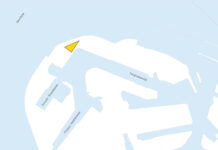
Wallenius Wilhelmsen is the first shipping company to adopt a fully Artificial Intelligence (AI)-based approach for voyage optimisation.
This action concerns 65 ships, and is expected to contribute to reducing fuel consumption by up to 10%.
“It is a significant step on our way towards zero emissions,” said Geir Fagerheim, senior vice president of marine operations at Wallenius Wilhelmsen.
It should be noted that the company has set a goal of reducing emissions by 27.5% by 2030.
“Half of this reduction will have to come from existing vessels. We are diligently working to find emission-friendly solutions for our existing fleet. This partnership is one of several that will help us reach the reduction target. We aim to implement this next-generation voyage optimization solution for increased vessel efficiency across our entire fleet,” noted Fagerheim.
Wallenius Wilhelmsen has been working with Athens-based marine technology company DeepSea to test and further develop its vessel performance software for the past year and a half. DeepSea is a specialist in the use of machine learning and artificial intelligence and on a mission to make shipping more efficient.
Over the past three years, Wallenius Wilhelmsen has made significant investments in Information Technloogy and cloud infrastructure and is working to install sensors on ships to capture data related to reducing fuel consumption.
These sensors are responsible for monitoring vital operational parameters of vessels such as fuel consumption, shaft power, speed and electricity consumption among others.
Fagerheim explains, “We can now harvest this data using cloud technology, then run it through a complex mathematic model which, with the help of AI technology like that from DeepSea, ultimately provides the vessel captain with detailed instructions regarding optimal route and vessel speed. These tools give instructions foreseeing sailing conditions with great precision when correlated with weather forecast prognosis updates. No human being, no matter how many years of experience they have, can compete with these automated sailing instructions. It reduces emissions, it reduces fuel consumption, and it increases safety during operation.”





